
Point Sal, Bakersfield Field Office
|
|
ISSUE 893- March 12, 2020
|
|
|
- Recreation and Public Access
- Headlines and Highlights
- BLM and DOI Highlights
- Wildlife Question of the Week
- Upcoming Events
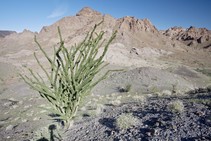
BLM California accomplishment under the Dingell Act
BLM California has begun work on the newly established, 82,000-acre Vinagre Wash Special Recreation Management Area, public lands designated to enhance and preserve OHV recreation, horseback riding, mountain biking and #hiking while preserving surrounding #wilderness landscapes. Over 50 channel posts and signs have been installed around the Milpitas Wash, Palo Verde and Buzzards Peak wildernesses to guide and inform public recreation in Imperial County. (BLM CA Facebook)
|
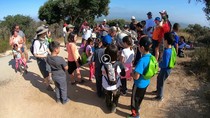
Hike with Tammy
Here's a great video from Ranger Tammy's Junior Ranger hike from earlier this year. Roughly half of the students and families had never been to the Fort Ord National Monument! Way to go Bureau of Land Management - California for reaching out to the community! (Fort Friends Facebook)
|
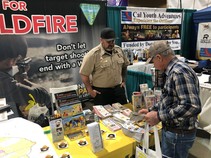
BLM California at the Fred Hall Outdoor Show
The Bureau of Land Management is participating in the 74th annual Fred Hall Outdoor Show @ Long Beach Convention Center. In the first two days, staff have already talked to more than 4,000 people at the booth where they are sharing info about fire prevention and ways to help reduce the threat of wildfires. (BLM Facebook)
|

'Flowy' Swasey Shred wows high school mountain bikers
This weekend's Swasey Shred was such a hit among high school mountain bike racers that they're enthusiastic about returning for several years to come. Hundreds of high school mountain bikers pedaled the wet and sometimes muddy dirt trails at the Swasey Recreation Area west of Redding while their coaches and families cheered them on Saturday. (Record Searchlight)
|
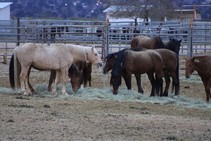
Wild horse and burro adoption open house
If you are interested in adopting a wild horse or burro, please call or visit the BLM corrals in Ridgecrest, California. Every other week, the corral hosts an open adoption event for gelded horses, mares, gelded burros and jennies. The next open house will be on Friday, March 13th. (BLM CA Facebook)
|
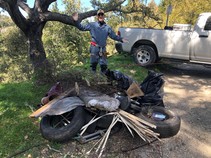
380 pounds of trash and debris collected from public lands
The BLM is committed to keeping America’s public landscapes healthy and productive. Central Coast Field Office Park Ranger Scott Hubbard shows 380 pounds of trash and debris he collected from public lands near Bonny Doon in Santa Cruz County. (BLM CA Facebook)
|
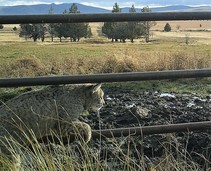
There's a lot of life out there on the public lands
Our natural resource management specialists often use remote monitoring cameras to gain a better understanding of how wildlife, permitted livestock and wild horses and burros use the public lands. Sometimes their cameras capture images worthy of a closer look. A camera at Stove Spring, about 35 miles northwest of Susanville snapped this image of a bobcat. (BLM CA Facebook)
|
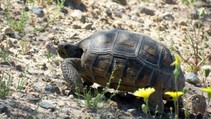
New program gives Cal City inmates chance to restore Mojave Desert plants for declining tortoise population
A group of inmates at the California City Correctional Facility will be participating in a new program aimed at seeding the Mojave Desert to provide plants that feed and shelter endangered wild tortoises.
The California Department of Corrections and Rehabilitation said 10 inmates are participating in the Mojave Desert Seed Project, which starts on March 12. (KGET)
|
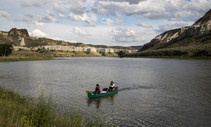
Interior celebrates one year anniversary of historic conservation law
The John D. Dingell Jr. Conservation, Management, and Recreation Act is the single most important public lands management law to be passed in over a decade. (DOI news release)
|
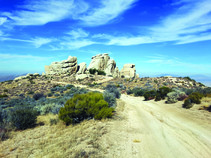
Bureau of Land Management releases draft public land access priorities
As part of its efforts to implement the John D. Dingell, Jr. Conservation, Management, and Recreation Act, the Bureau of Land Management today released a draft list of public lands with limited or restricted public access for hunting, fishing or other outdoor recreational opportunities, along with a draft map of priority access nominations received from the public and partners. (BLM news release)
|

Secretary Bernhardt announces September homecoming of artistic masterpieces
U.S. Secretary of the Interior David Bernhardt announced that after 20 years, the Department of the Interior’s two panoramic masterpieces by artist Thomas Moran (1837–1926) will be back on public display at the Interior Museum in Washington D.C. this September. (DOI news release)
|
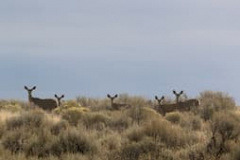
BLM proposes expedited review of pinyon-juniper restoration projects
Proposal would allow agency to address threat posed to sage-grouse, mule deer and other native species from encroachment of pinyon-juniper woodlands on sagebrush habitat across the West (BLM news release)
|
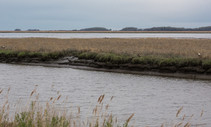
Interior’s Fish and Wildlife Service establishes procedures to provide landowners clarity on wetland easements
As part of its continuing effort to be a good neighbor, provide transparency to landowners and reduce regulatory burdens, the Department of the Interior’s U.S. Fish and Wildlife Service has issued internal guidance encouraging Service personnel and landowners to work together. (DOI news release)
|
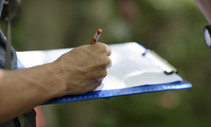
Secretary Bernhardt signs order establishing transparency of costs associated with developing Interior’s publications and products
The Order directs all bureaus and offices to immediately take steps to identify and quantify the cost of publications and documents, tracking costs of full-time equivalent personnel hours, contractor costs and other costs associated with issuing covered documents. (DOI news release)
|
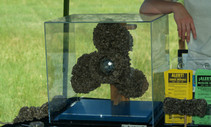
Interior combating the spread of invasive mussels throughout the Lower Colorado River Basin
The agreement builds on existing nationwide Interior efforts to address invasive species and specifically leverages bureau resources in Arizona, California and Nevada to bolster the Watercraft Inspection and Decontamination data sharing system and Watercraft Inspection Decontamination Training. (DOI news release)
|
|

Whale Milk
The gray whale (Eschrichtius robustus) is a large marine mammal that is part of the baleen whale suborder and belongs to the cetacean family which also includes dolphins and porpoises.
While adult gray whales will eat benthic crustaceans and other types of prey, baby whales are fed milk until they can hunt for food themselves.
Roughly how many gallons of milk does a baby gray whale consume a day?
a) 432 gallons
b) 1,312 gallons
c) 80 gallons
Keep scrolling to find the answer.
|

BLM seeks comments on 2020 off-highway vehicle recreation proposals
The Bureau of Land Management is seeking public comments on the California State Parks, Off-Highway Motor Vehicle Recreation Division, off-highway vehicle recreation proposals, which are available for review from March 3 to May 4 (BLM news release)
|
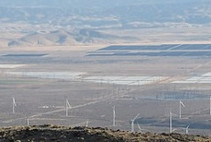
BLM seeks public comment for the Camino Solar Project in Kern County
Deadline for submitting comments is March 16
The Bureau of Land Management, Ridgecrest Field Office, is seeking public comments on the Camino Solar Project located in the Antelope Valley, west of Rosamond in Kern County. (BLM news release)
|

BLM seeks public input on draft Cotoni-Coast Dairies management plan
The 30-day public review period ends on March 19.
The Bureau of Land Management Central Coast Field Office is seeking public input on an environmental assessment and draft amendment to the Resource Management Plan for the California Coastal National Monument that will provide management direction for Cotoni-Coast Dairies public lands in Santa Cruz County. (BLM news release)
|
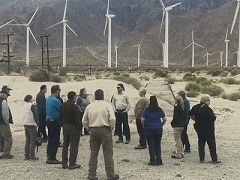
BLM Desert Advisory Council to meet in El Centro, April 3-4
The Bureau of Land Management will hold a field tour and public meeting of the BLM California Desert District Advisory Council, consistent with BLM’s commitment to partnerships and public input necessary for managing sustainable, working public lands. (BLM news release)
|
|
Wildlife Question of the Week Answer
The answer is C. A baby gray whale can consume as much as 80 gallons of milk per day.
Whales are marine mammals and like all mammals (with the exception of a few species) they share many of the same traits with land mammals including baring offspring (whales have a gestation period similar that is very similar to pregnancy in humans), being warm-blooded, having hair (some species are born with hair) and producing milk to feed their young.
The thick whale milk is often referred to as having a toothpaste like consistency.
This is very important because in order for the adult female whale to feed her baby she must either shoot the milk into her baby’s mouth through the water or allow the child to suckle the milk from her nipple.
If the fat consistency is too low than the mother’s milk would dissolve in the water making it difficult for the baby whale to feed and receive adequate nutrients.
Point Sal is a 77-acre promontory on the coast of northern Santa Barbara County managed by BLM California where gray whales can be viewed.
Related Links: whalefacts.org Point Sal NOAA.gov
|